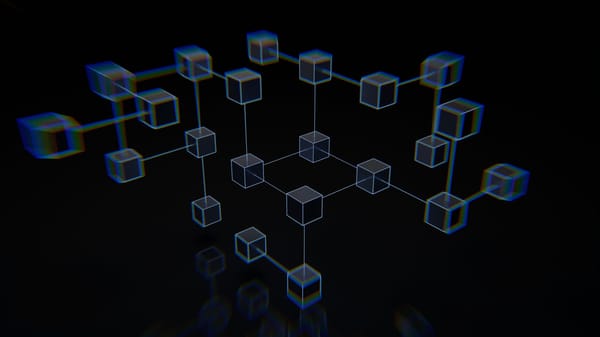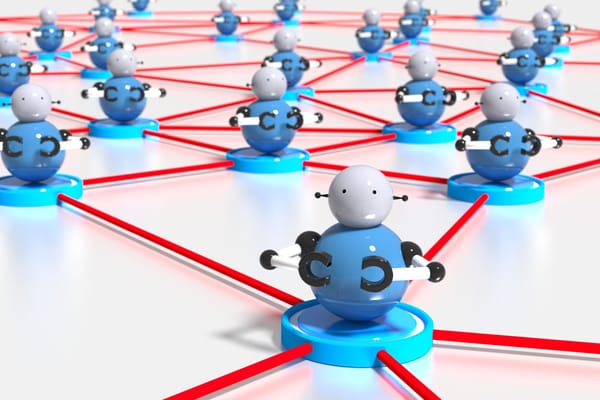World IoT Day: Connecting the Dots for A Smarter Future
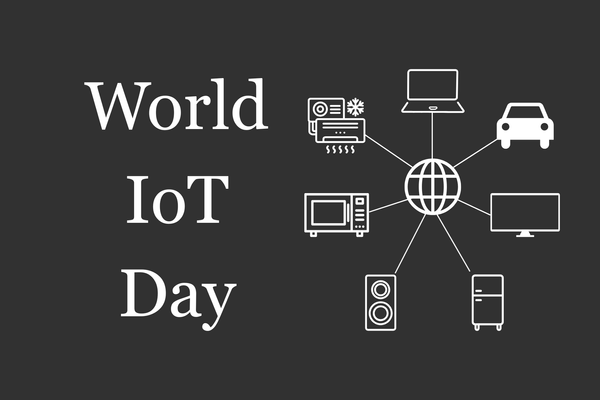
Every year on April 9, we celebrate World Internet of Things (IoT) Day, an occasion to recognize its transformative impact on our lives.
But what exactly is the Internet of Things, and why is it so vital to our daily lives?
What is IoT?
The term "IoT" refers to the totality of physical internet-connected devices that collect and share data from all around the world.
This network of interconnected systems encompasses devices ranging from simple sensors used to monitor temperature or moisture to wearable health trackers to sophisticated smart home ecosystems, industrial machinery, and autonomous vehicles.
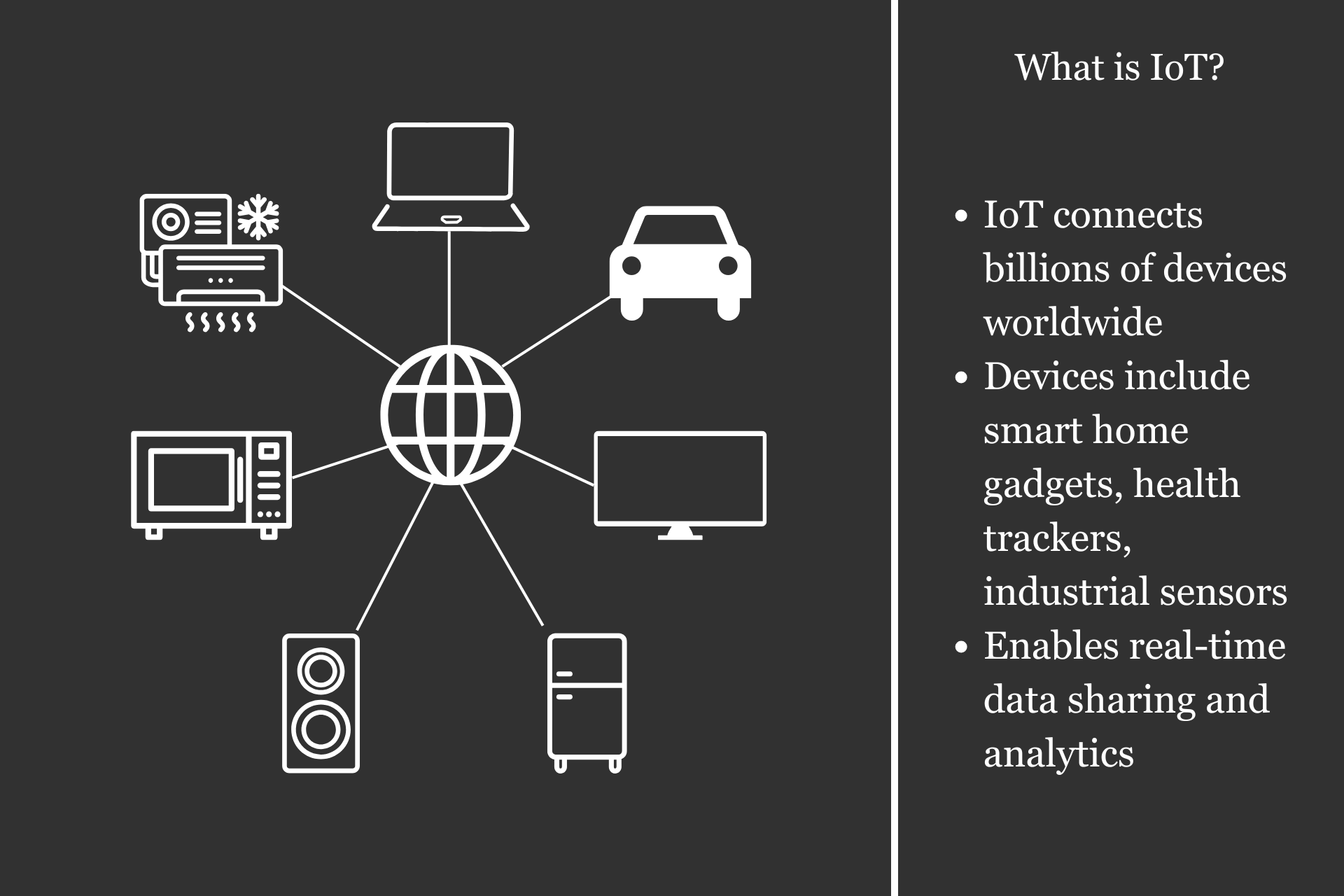
The Internet of Things effectively merges the digital and physical worlds, enabling valuable insights, responsiveness, and efficiency. In doing so, it revolutionizes industries such as healthcare, agriculture, and manufacturing, as well as everyday life.
Why is IoT important?
The importance of IoT cannot be overstated, considering it’s reshaping the way we live and work. Among the most important perks brought by IoT technology are:
- Enhanced efficiency: By optimizing processes, reducing waste, and saving time, IoT brings an unparalleled level of efficiency to the projects where it’s employed.
- Improved health and safety: Wearable IoT devices, such as health trackers and sensors, continuously monitor health metrics, enabling users to detect anomalies early and alert healthcare professionals promptly. This is also applicable to industry professionals, enabling them to detect equipment failures before they occur, preventing costly downtime and accidents and reducing associated costs.
- Sustainability and environmental impact: IoT technologies can significantly reduce carbon footprints by minimizing energy consumption through smart grids, real-time energy tracking, and efficient building management. IoT sensors can also support environmental conservation efforts by tracking pollution levels, reducing traffic congestion, and even tracking wildlife movements.
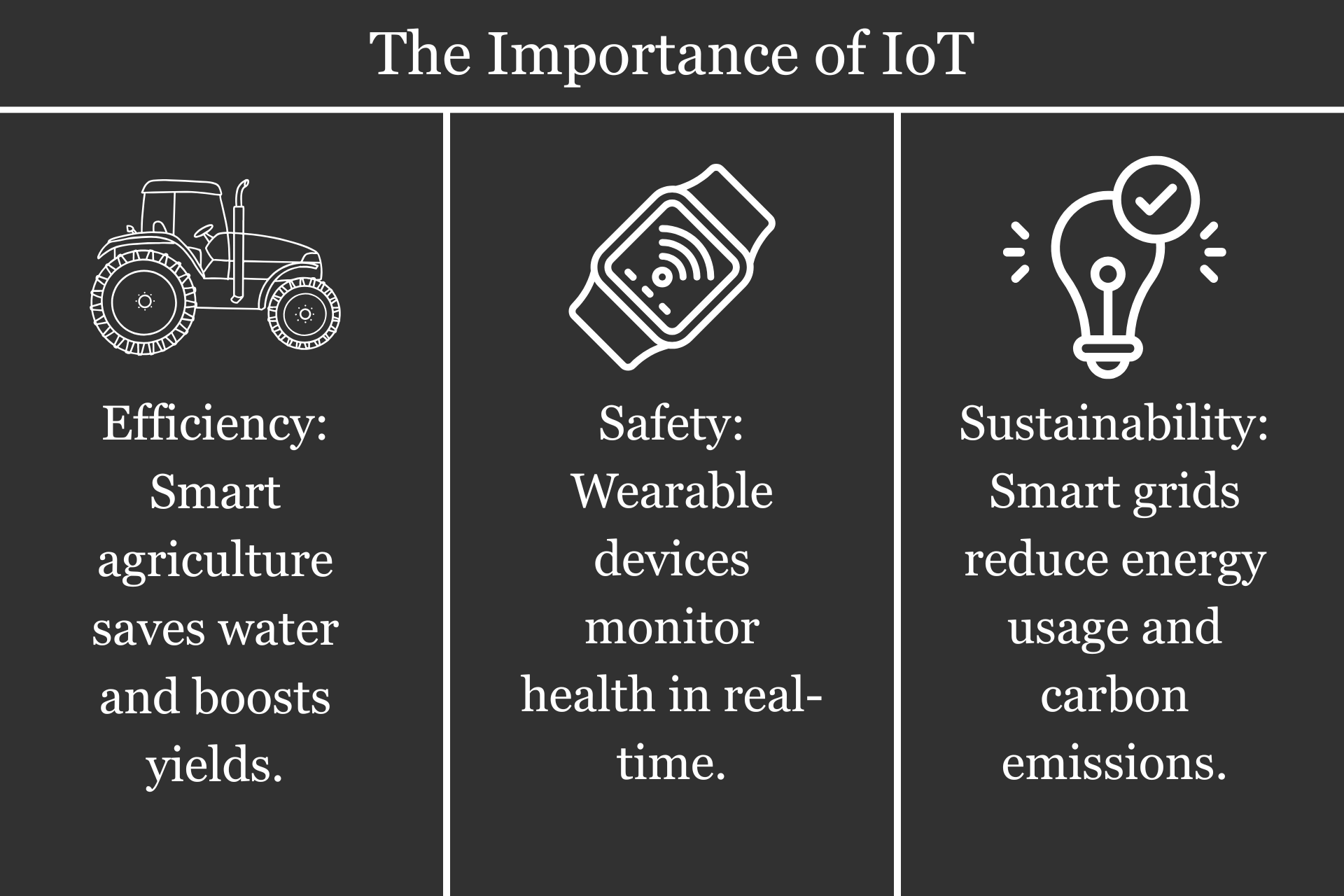
Dos and Don’ts of IoT implementation
When implemented right, IoT offers tremendous potential. However, successful implementation requires a balance of awareness and thoughtful planning. These pointers can help increase your odds of implementing an IoT ecosystem with minimum flaws:
Do:
- Prioritize security: Robust cybersecurity measures can thwart criminals’ attempts to use insecure IoT devices as gateways. Dedicated security software like Netgear Armor can help you protect devices connected to your network against online threats and data thieves.
- Protect privacy: Limiting the type of data collected by IoT devices can boost your privacy. Most devices will seek permissions that are not necessary for their functionality; restrict permissions based on each use case.
- Regularly update firmware: Keep devices on your network updated. Manufacturers often release patches to improve the functionality of their products and fix vulnerabilities.
- Plan for scalability: Consider future growth of your IoT ecosystem to account for the expansion of your infrastructure without compromising security or performance.
Don’t:
- Neglect device management: Consider implementing monitoring, management, and maintenance plans for your IoT network.
- Underestimate costs: While initial IoT configuration costs may be low, ongoing expenses related to security, infrastructure and data management can quickly add up.
- Overlook interoperability: Compatibility issues can become a significant issue. Avoid vendor lock-in scenarios by ensuring that your IoT ecosystem supports multiple devices and platforms.
- Skip user training: If multiple users have access to your IoT ecosystem, they must understand the device's capabilities and limitations to prevent security vulnerabilities or misuse.
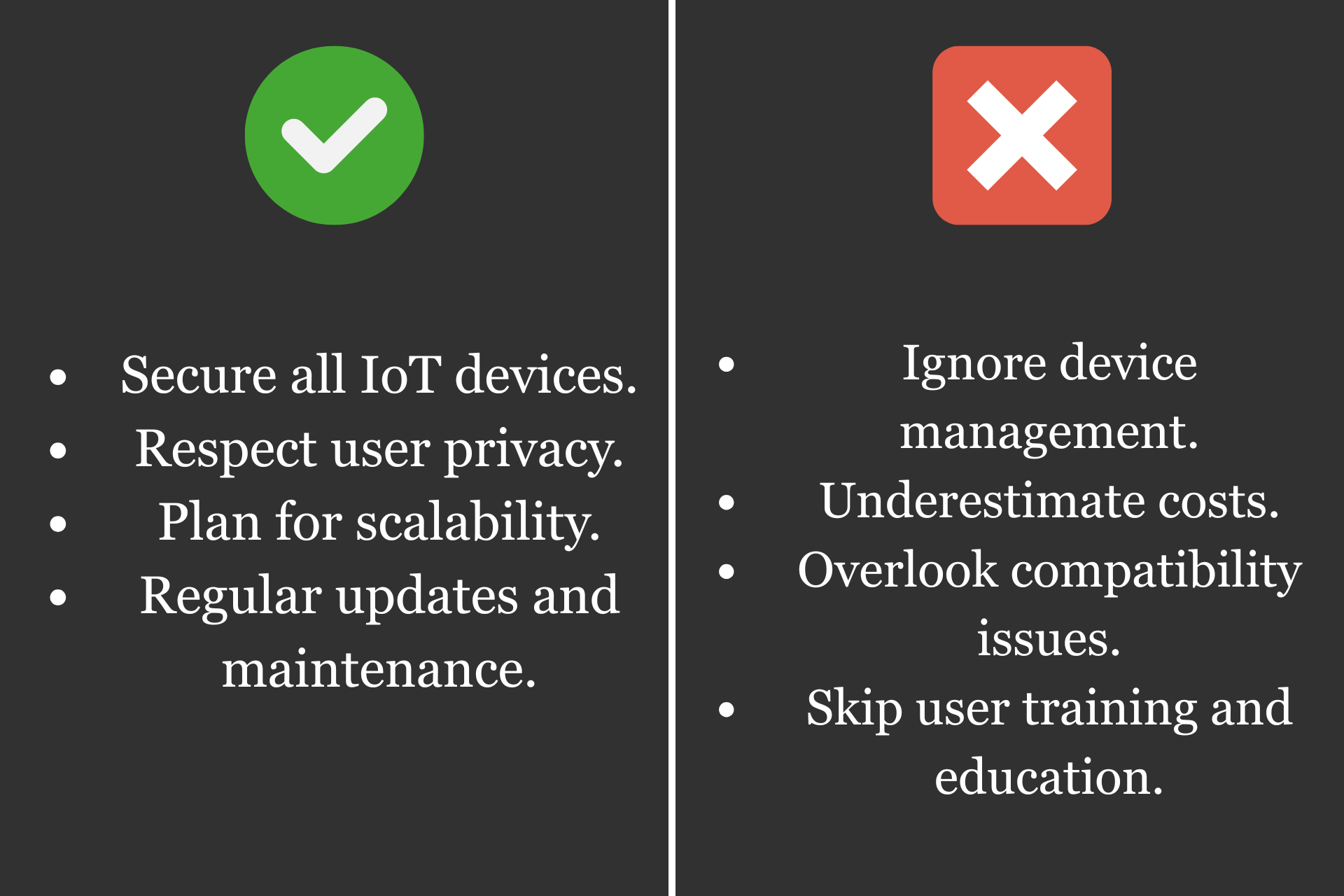
Did you know?
- IoT's accelerated growth: Analysts estimate that by 2030, there will be over 40 billion IoT devices globally, up from almost 19 billion today
- Economic impact: IoT is projected to have an economic impact of up to more than $14 trillion annually by 2030, influencing virtually every industry.
- Environmental impact: IoT-enabled smart grids could reduce global carbon emissions by up to 20% by optimizing energy use and distribution.
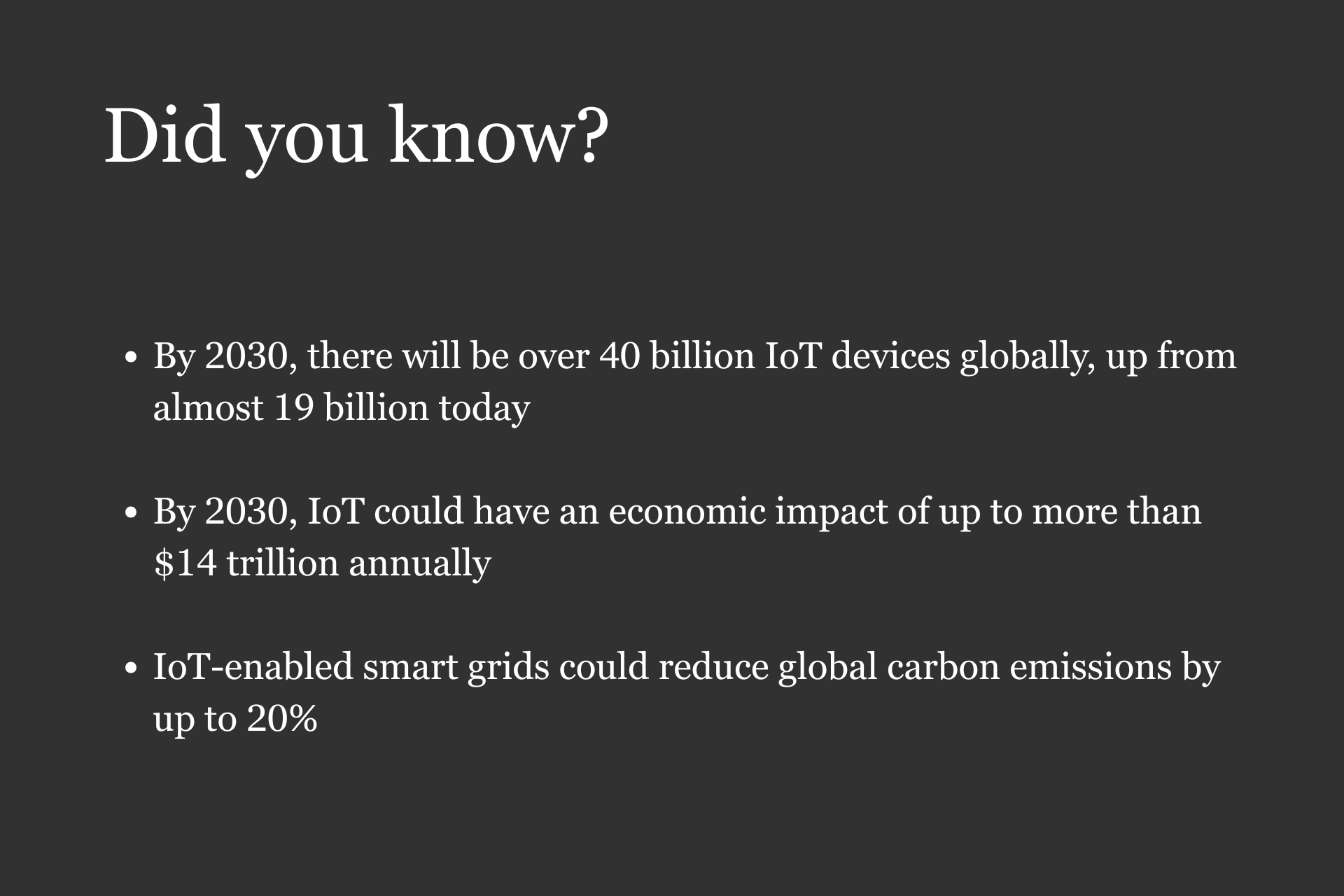
Insights from our internal research
Our latest research reveals fascinating insights, some of which are even surprising, into IoT trends and user behavior.
- Vulnerable devices: In 2024, the topmost vulnerable devices were smart plugs (28.66%), Network-Attached Storage (NAS) devices (17.89%), smart TVs (16.93%), IP cameras (6.33%) and routers (4.23%).
- Common attacks: Last year, the most common vulnerability categories affecting IoT devices included buffer overflow (28.66%), denial of service (26.38%), privilege escalation (12.71%), remote code execution (RCE) at 11.83%, and memory corruption at 9.67%.
- Devices per household: The average household hosts around 21 internet-connected devices.
- Daily attacks: IoT devices on home networks are targeted by an average of 10 attacks every 24 hours.
Real-world applications of IoT
Most users are familiar with the IoT from smart home presentations, and many have already set up IoT ecosystems in their own households.
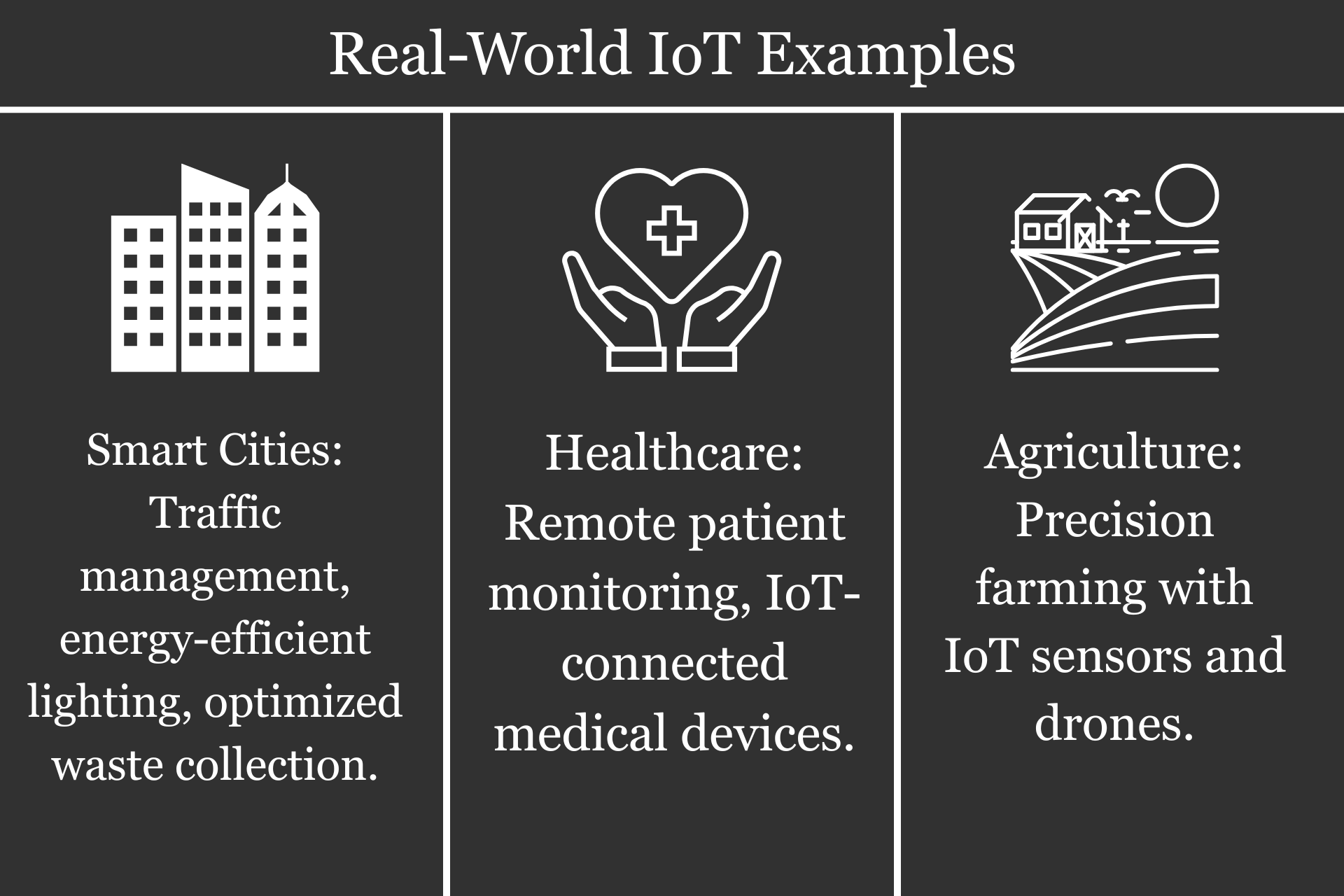
However, the technology’s applicability extends much further, as many industries rely heavily on IoT to boost efficiency while optimizing costs. Some of the most impressive examples of such IoT use cases include:
Smart cities
Extending beyond the convenience of one’s home, smart cities may just be the pinnacle of IoT-powered modern living. Cities like Barcelona and Singapore have already implemented IoT for waste collection, smart lighting and traffic management.
Apparently, simple solutions can seriously improve citizens’ quality of life. For instance, smart traffic lights reduce congestion, helping people transit the city more easily. IoT-enabled street lighting can have a significant impact on energy savings and associated cost reductions, while internet-connected waste bins can optimize collection routes and reduce operational expenses.
Healthcare revolution
In the healthcare sector, where lives are on the line, there’s no such thing as "too much help." Every technological advance and improvement in support can significantly enhance patient outcomes and overall safety.
Remote patient monitoring devices provide physicians and healthcare professionals continuous health tracking, enabling proactive and timely interventions.
Devices like IoT-connected insulin pumps and heart rate monitors can significantly improve patient quality of life and outcomes.
Fine-tuning agriculture
Agriculture has traditionally been perceived as the art of life itself, where devoted, green-thumbed farmers could seemingly transform everything they touched into abundance even without precision measurements.
However, the emergence of IoT technology has dramatically shifted this paradigm, demonstrating that precision, supported by interconnected smart devices, can significantly enhance efficiency, sustainability and production.
Nowadays, farmers use devices like drones and IoT sensors for real-time crop monitoring, resource optimization and pest detection.
Future trends in IoT
As IoT continues on its ascendent path, it’s becoming clearer that we’re only scratching the surface of the possibilities.
The next decade promises groundbreaking developments shaped by shifting user behavior, technological breakthroughs, and expanding interconnectivity.
Businesses and individual users alike should prepare for a future where devices become even more intelligent and intuitive, and equipped with more robust security measures.
Likely scenarios include:
Edge computing
By moving data processing closer to the device (i.e., edge computing), users can expect a more efficient system with lower latency and enhanced real-time decision-making capabilities.
Enhanced AI integration
Many IoT devices already boast artificial intelligence, which is why more technology heavily reliant on AI should be expected in the next few years.
Implementing AI into IoT devices could provide end users with better automation, highly detailed analytics and smarter insights on usage patterns.
Advanced security measures
While no security approach fully solves every emerging challenge, IoT security must continue to evolve in tandem with the increasingly sophisticated tactics, techniques, and procedures (TTPs) employed by threat actors.
The future of IoT security resembles a perpetual game of cat and mouse, where cybercrooks tirelessly devise innovative ways to bypass defenses, prompting security experts to adapt and respond in turn.
This dynamic demands continuous investment in proactive threat detection, advanced encryption methods, and zero-trust architectures to ensure privacy, security, and integrity.
Celebrating World IoT Day by taking action
World IoT Day should be viewed as a call to action that aims to raise awareness and encourage steps to protect and enhance the well-being of all IoT adopters.
Whether it’s individuals integrating smart devices into their daily lives or businesses deploying IoT solutions at scale, the goal is the same: ensuring safe, secure, and responsible usage that benefits everyone involved.
Here are a few ways individuals and businesses can participate:
- Educate and advocate: Spreading awareness about the benefits of IoT as well as how to implement it responsibly can benefit members of your community or organization.
- Review security practices: World IoT Day can be an ideal opportunity to reassess your IoT security protocols and update your practices to mitigate risks. Now would also be a great time to patch out-of-date firmware and renew obsolete devices, where needed.
- Encourage sustainability: Advocate for IoT solutions that actively embrace environmental protection and resource conservation.
Conclusion
World IoT Day presents an excellent opportunity for us to consider the transformative power of IoT, as well as our shared responsibility to leverage this technology effectively and ethically.
By connecting the dots to security, privacy and sustainability, we can harness IoT’s potential for a smarter, safer future for everyone.
Happy World IoT Day!
tags
Author

Vlad's love for technology and writing created rich soil for his interest in cybersecurity to sprout into a full-on passion. Before becoming a Security Analyst, he covered tech and security topics.
View all postsRight now Top posts
Outpacing Cyberthreats: Bitdefender Together with Scuderia Ferrari HP in 2025
March 12, 2025
Streamjacking Scams On YouTube Leverage CS2 Pro Player Championships to Defraud Gamers
February 20, 2025
How to Identify and Protect Yourself from Gaming Laptop Scams
February 11, 2025
Your Device ‘Fingerprint’ Will Go to Advertisers Starting February 2025
December 24, 2024
FOLLOW US ON SOCIAL MEDIA
You might also like
Bookmarks






